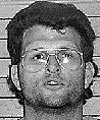 |
Case History: This case surfaced in January, 1990, when a woman named Taunja Bennett was murdered in the Portland, Oregon, area. The slaying seemed an isolated, single murder since there had been no other similar slayings in the area. In fact, Bennett was part of a serial case, but the killer’s propensity was to find his victims in a number of cities while working as a long-haul truck driver. Early in the Bennett case police focused their investigation on a couple after the woman claimed her male friend killed Bennett and then implicated herself. Although that investigation was full of unanswered questions and dubious evidence, the couple was convicted and sentenced to life in prison. They were not the "killer."
Communiqués: The first sign something was amiss in the case came in April, 1990, when a message was scrawled on a wall in Umatilla, Oregon. The message read: "Killed Tanya Bennett in Portland. Two people got the blame so I can kill again (Cut buttons off jeans – proof)" (Painter, 1995a). A second message was found scrawled on a restroom wall at the Greyhound Bus Depot in Livingston, Montana. It said: "I killed Tanya Bennett Jan. 21, 1990 in Portland, Oregon. I beat her to death, raped her and loved it. Yes, I’m sick, but I enjoy myself too. People took the blame and I’m free" (Painter, 1995a). Even though one of the missives contained information unknown at the time to the public, police in the Portland area paid little attention to the note since the author was unknown. The mystery deepened on March 29, 1994, when a letter postmarked in Portland arrived at the Washington County Courthouse. The anonymous writer claimed the couple was innocent. At the time, the female suspect was on trial. A short time later, a six-page, letter handwritten on blue paper arrived at The Oregonian. The writer complained that the letter sent to the courthouse was never in the newspaper. He then claimed responsibility for the Bennett slaying. Not only that, he took responsibility for several other slayings around the country. The writer wrote: "All 5 of 5 I would like to tell my story! I am a good person at times. I always wanted to be liked. I have been married and divorced with children…" (Stanford, 1994a). The writer, who claimed to be a long-haul truck driver, then provided details of the Bennett murder that had not been released by police. The writer signed the letter with a "Happy Face" at the top of the first page. A columnist for The Oregonian felt the "Happy Face" letter was genuine and in May, 1994, wrote a five-part series analyzing the letter and pointing out the details of the murder that only the killer probably knew. Police remained dubious. One police captain told reporters: "All police agencies in the country get letters from people. A lot of them have mental problems. You can read through the letters and [End Page 61] see they have no credibility" (Stanford, 1994b). Prosecutors stated that it would not shock them "to find out that somebody talked to somebody who talked to somebody" (Stanford, 1994b). One serial killer expert sided with The Oregonian in thinking the letter came from the killer. That expert was Robert Ressler, formerly of the FBI. He stated: "To be a hoax, a person would have had to learn a great deal about the case" (Stanford, 1994b).
Investigative Value: It was not until 1995 that investigators took the communiqués seriously (Painter, 1995b; Jesperson, 1999). The pieces began coming together on March 11, 1995, when the body of Julie Ann Winningham of Camas, Washington, was found. On March 22, 1995, investigators interviewed her boyfriend about Winningham’s death. He was a Canadian long-haul trucker named Keith Hunter Jesperson. The following day, while on the road in Arizona, Jesperson telephoned an investigator and confessed over the phone to killing his girlfriend. That same day, Jesperson wrote a letter to his brother in which he said that in the past five years he had killed several women. The Multnomah County District Attorney’s Office finally decided to take a new look at the Bennett murder case after Jesperson was returned to Oregon and he wrote the media that he was the author of the "Happy Face" letter sent to The Oregonian a year before. Handwriting experts concluded the same person wrote the restroom missives, the "Happy Face" letter, and the letter to Jesperson’s brother. Fingerprints on a letter also tied Jesperson to the crimes. Although the communiqués did not help in the identification of the killer, they were of investigative value in positively tying Jesperson to several killings. Jesperson is serving three life sentences in Oregon for three murders in Oregon and Washington. Other jurisdictions would like to put him on trial. |